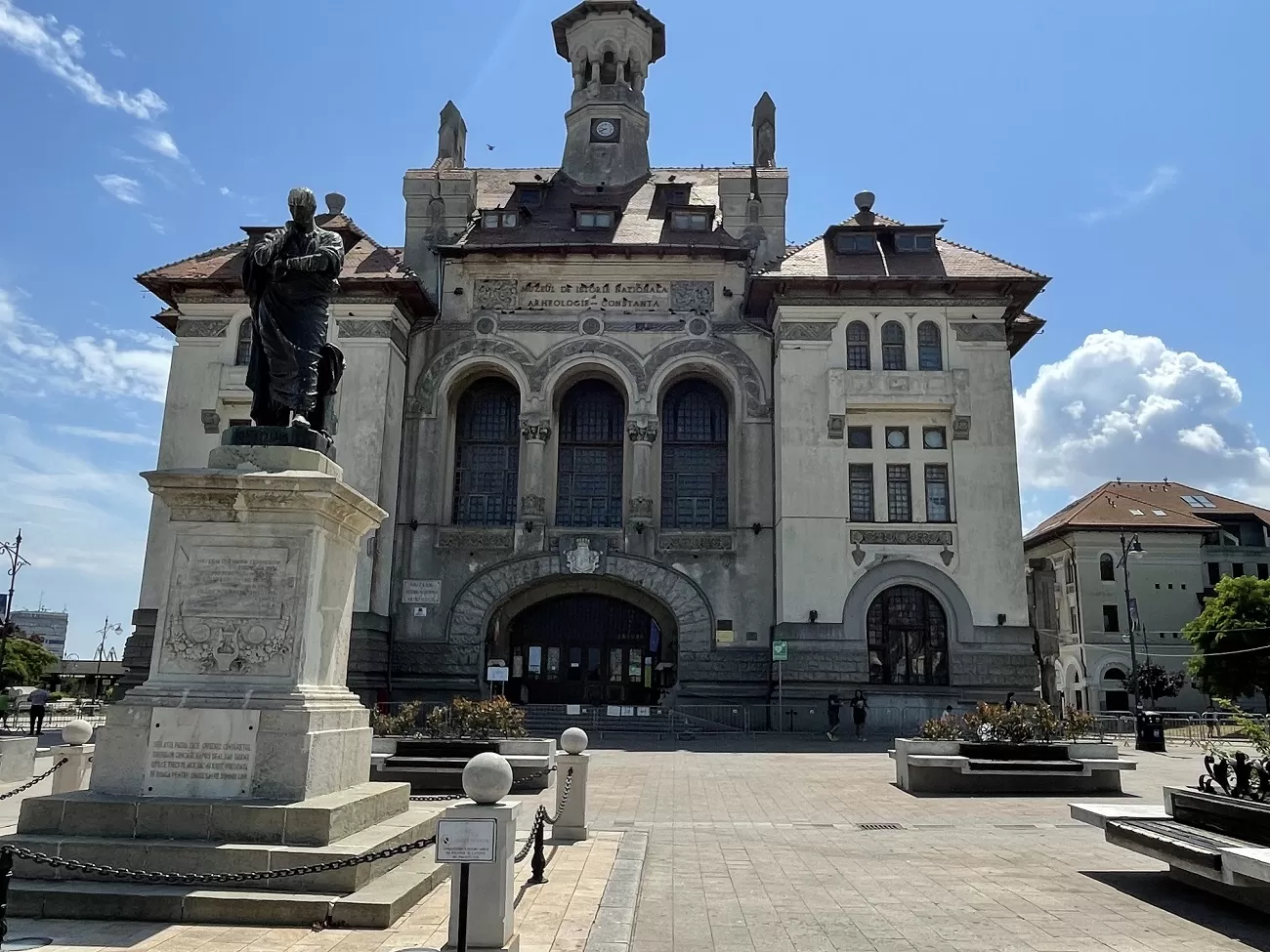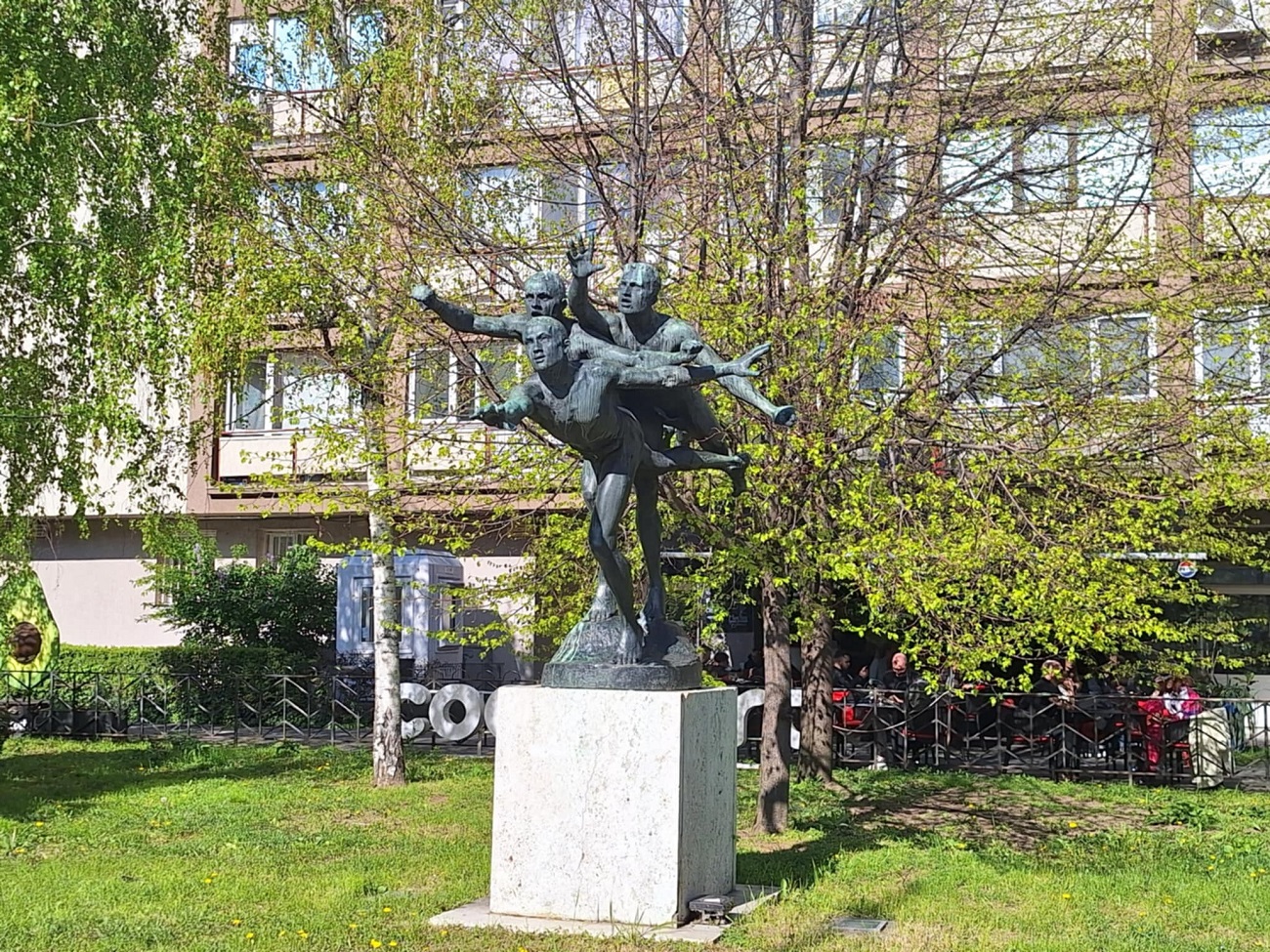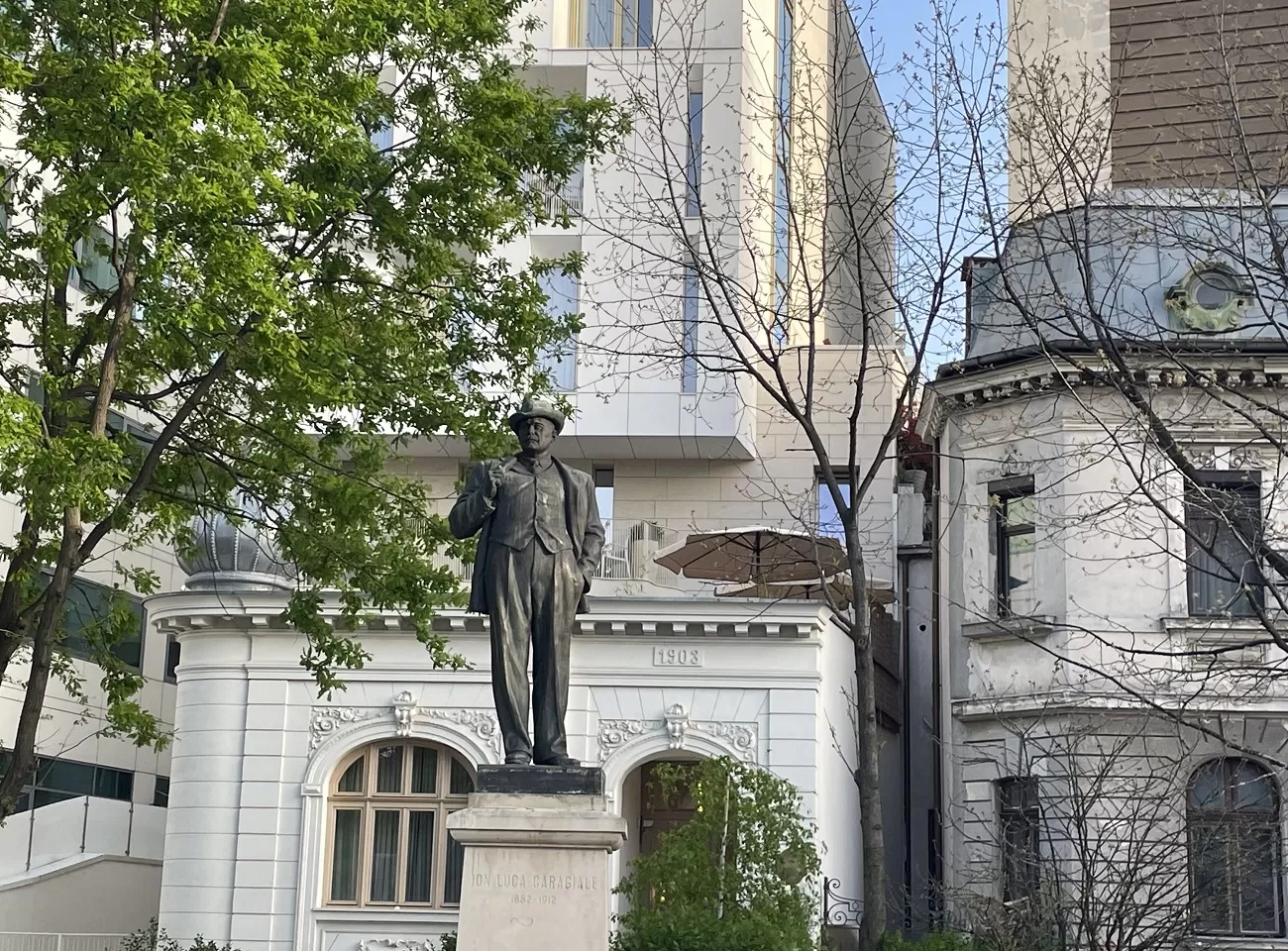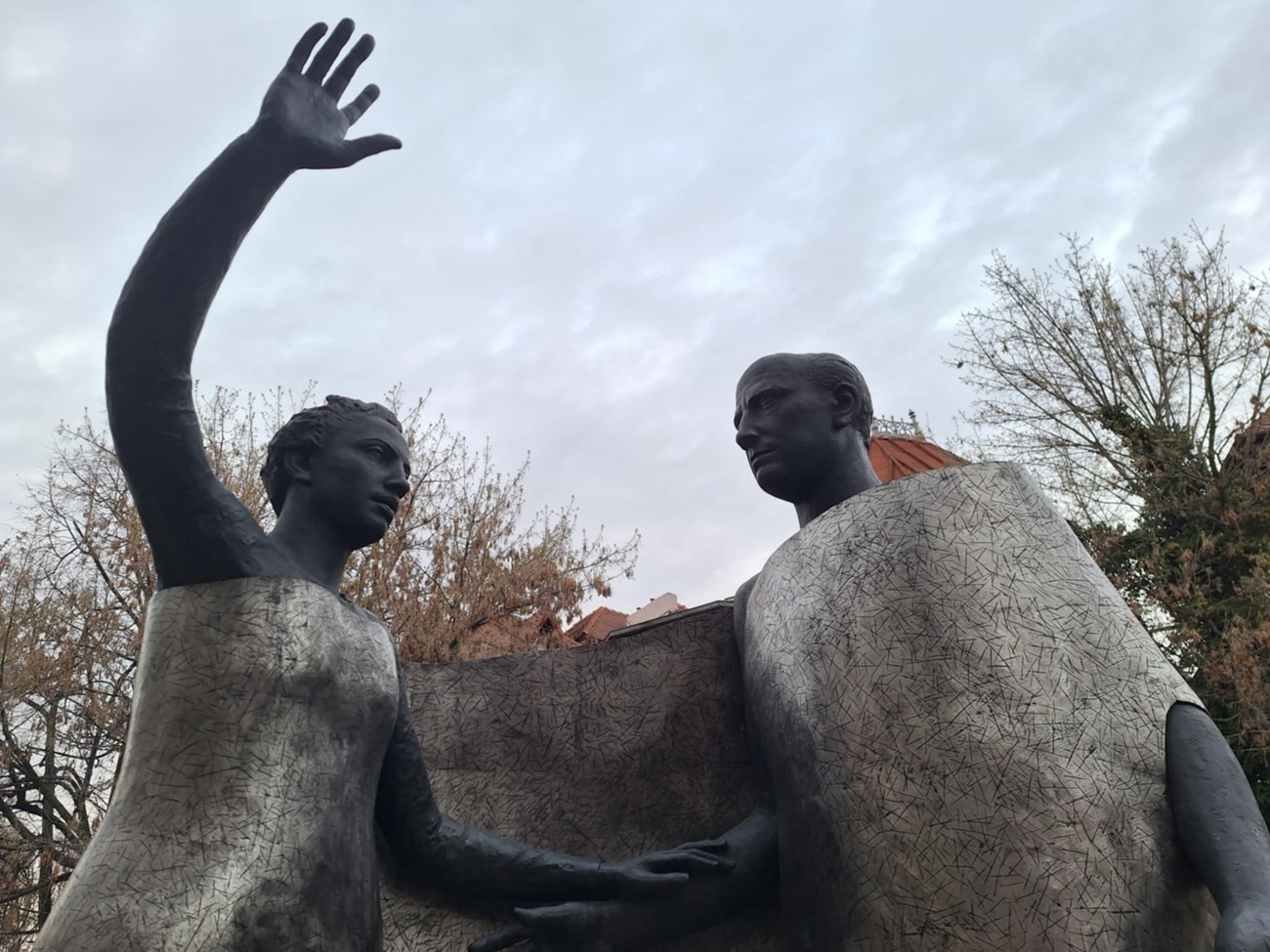
Monumental art – The most famous statue of Eminescu
The statue of Mihai Eminescu made in bronze in 1963 by the sculptor Gheorghe D. Anghel (1904 – 1966) is often photographed by tourists when they arrive in front of the Romanian Athenaeum.
Placed on a plinth in the Romanian Athenaeum Park by the communist leadership in 1965, the three-meter statue was made by the artist in his studio at the Pasărea Monastery and depicts the poet in his youth.
On this site was the “Pache’s Match” or “Eagle Column”, a commemorative monument that fixed the place of the altar of the church of the Bishopric of Ramnic, which remained on that land until the end of the 19th century.
In the Interwar period, the alleys of the Athenaeum Garden were adorned with busts dedicated to great Romanian politicians, cultural figures and artists. All the busts were destroyed during the years of the communist regime. Among them: Mihai Eminescu (by Ion Georgescu), Mihail Kogălniceanu (by W. C. Hegel), P.S. Aurelian (by W. C. Hegel), Ion Ghica (by Ioan Iordănescu), Traian Demetrescu (by Filip Marin), Dumitru Georgescu-Kiriac (by Oscar Han), Gavriil Musicescu (by Milița Petrașcu), C. A. Rosetti (by I. Georgescu), Vasile Urechea-Alexandrescu (by W. C. Hegel), Gheorghe Dem Theodorescu (by Carol Storck), C. I. Stăncescu (by W. C. Hegel) and Theodor Șerbănescu (by Filip Marin).

Mihai Eminescu (1850 – 1889) was a versatile personality. His immense capacity for hard work led Titu Maiorescu to say that, for Eminescu, “writing was life itself: he was the most diligent man, forever reading, meditating, writing. He was a poet in every sense of the word. Eminescu “is the full expression of the Romanian soul”, wrote Nicolae Iorga.
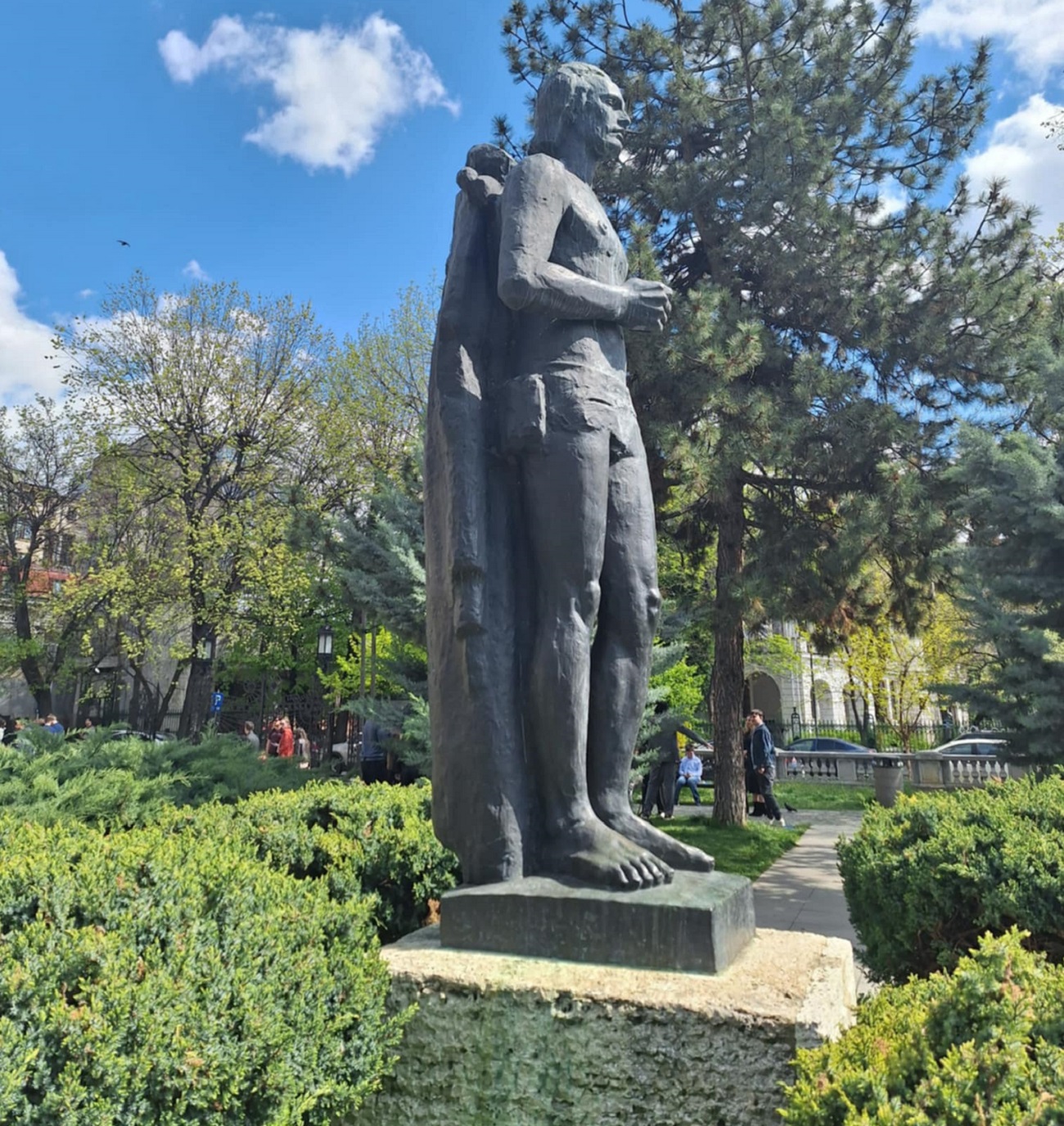
Gheorghe Anghel was born in Turnu Severin, on August 22, 1904. Between 1923 and 1924, he attended the School of Fine Arts in Bucharest in the class of master Dimitrie Paciurea, as an unregistered student. Between 1924 and 1937, Gheorghe Anghel lived in Paris, where he completed his artistic training. He studied for a while at the Ecole des Beaux-Arts with Professor Antoine Injalbert. He attended for a while the studio of Constantin Brâncuși and worked for three years, from 1925 to 1928, in the studio of the sculpture contractor Minazzoli and then decorative sculpture in the studio of the Bucharest architect Alexandru Delanof. Throughout this period he studied in museums and exhibitions, and was interested in monuments of French architecture and sculpture, according to information on monumentfor.ro.
Gheorghe Anghel established himself relatively late on the Romanian artistic scene, in 1943, when he exhibited a series of works in burnt clay in his first exhibition in Bucharest. The master worked, with rare exceptions, in bronze because, as he liked to say, for him sculpture meant primarily modeling. An extremely demanding artist, Gheorghe Anghel produced a relatively small oeuvre. He sometimes destroyed his own work and left a will in which he wished all his plaster casts to be destroyed.
His last work, the statue of Mihail Eminescu in front of the Romanian Athenaeum is, as the critic Petre Comarnescu wrote, “similar to that of the poet, through the same humanist aspirations…”. The sculptor died in 1966 in Bucharest.
Photo credit: curatorial





